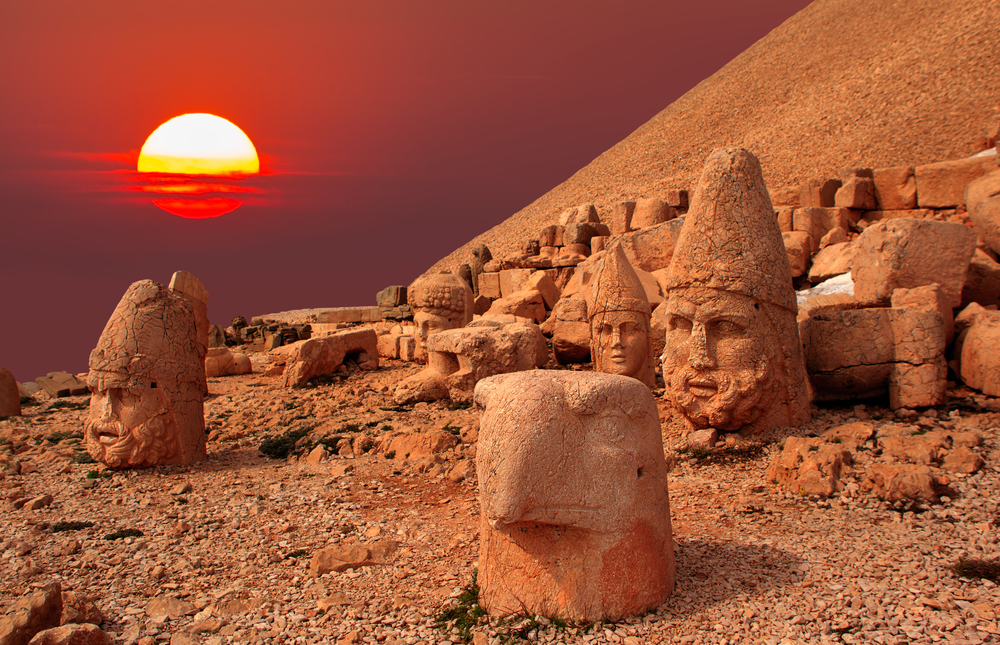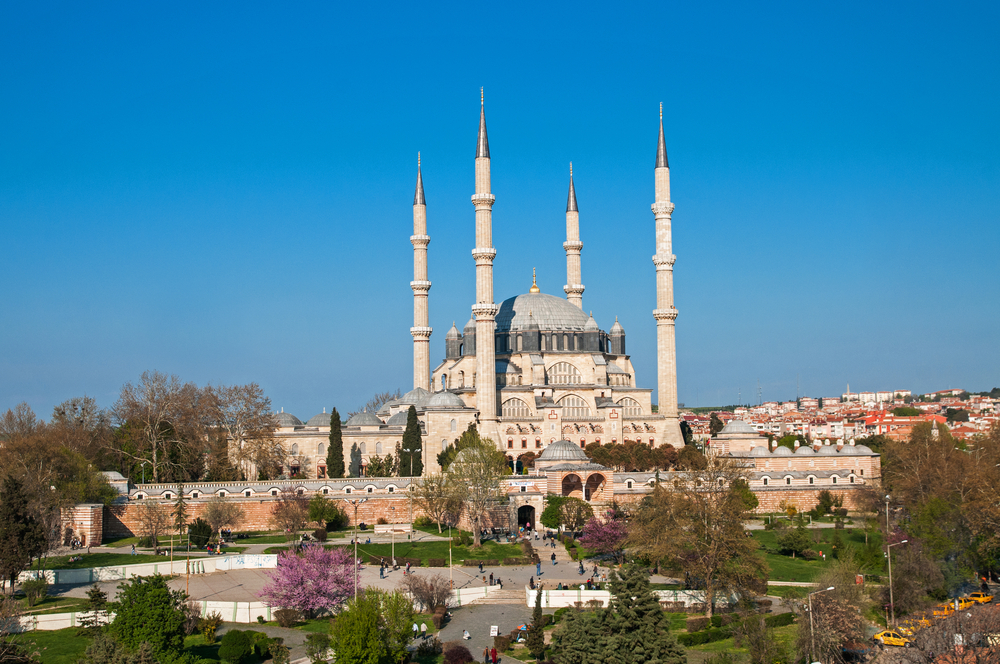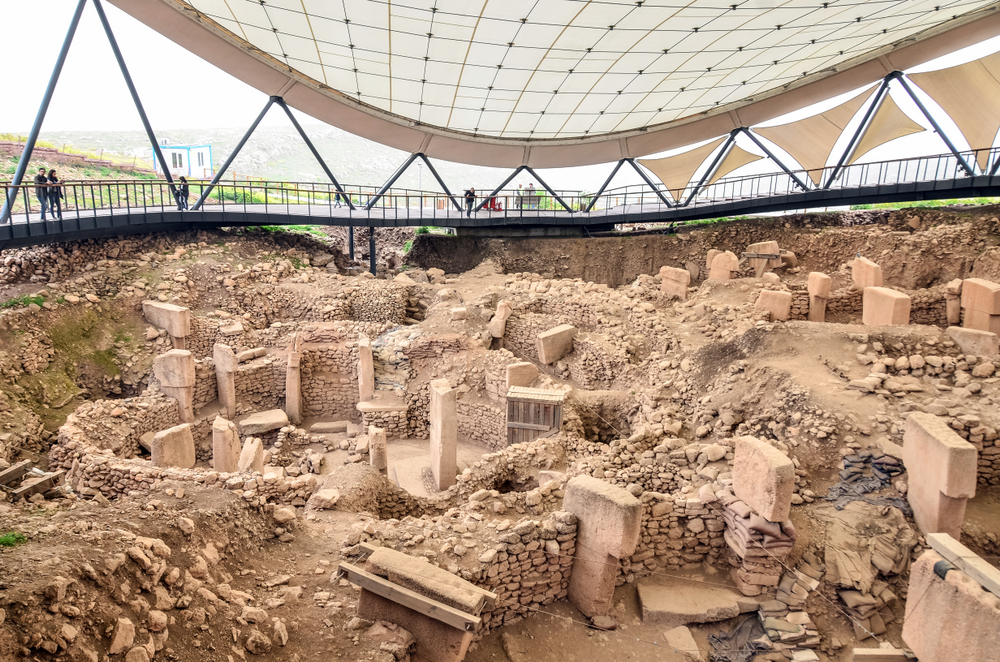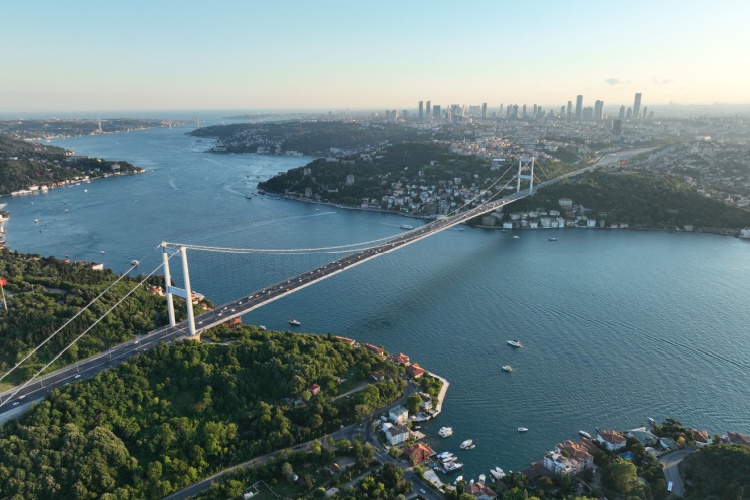10 Places in Turkey Inscribed Into The UNESCO World Heritage List
UNESCO World Heritage List lists mixed, cultural and natural formations. This listing aims to preserve these beauties and deliver them to future generations. Subject natural, cultural and mixed beauty when, of course, Turkey is bound to take place on this list! First held in 1972, the UNESCO General Conference and agreement, Turkey, had been included in 1982. The UNESCO World Heritage List contains 1211 heritage sites, 39 of which are mixed, 213 of which are natural and 869 of which are cultural. This list of cultural 16 from Turkey, there are also two pieces of mixed heritage. At the same time Turkey’s UNESCO World Heritage Site located in the provisional list of 87 pieces heritage. Here are entered into the UNESCO World Heritage List has ten cultural heritage in Turkey!
Mount Nemrut // Adıyaman

Located in Kahta district of Adıyaman, Nemrut Mountain is 2,206 meters high. Mount Nemrut is mentioned in the ancient sources as “the closest place to the throne of Zeus in the skies”. The statues and reliefs of giant gods on the mountain made Nemrut a UNESCO World Heritage Site. It was listed in 1987 at the summit of Mount Nemrut. There are tumulus and god statues known to belong to Antiochus I, King of Commagene, who reigned between 69-36 years. The Kingdom of Commagene is known as a buffer zone between Persia and Rome.
Selimiye Mosque and Complex // Edirne

Selimiye Mosque and Complex, one of the most important historical monuments of Edirne, was built in the 16th century. This work, which was built by Sultan Selim II by Mimar Sinan, has excellent technical features. Known as the masterpiece of Mimar Sinan, this building is a must-see with its splendid dome, elegant interior design, tile, mother of pearl, wood and marble motifs.
Bursa and Cumalıkızık: The Birth of the Ottoman Empire // Bursa
“Bursa and Cumalıkızık: The Birth of the Ottoman Empire”, which has been on the UNESCO World Heritage List since 2014, consists of Cumalıkızık Village, Muradiye Complex, Green Complex, Yıldırım Complex, Hüdavendigar Complex and Khans Area. The urbanization model realized here was an example for the later settlements of the Ottoman Empire.
Ephesus // Izmir
In the ancient city of Ephesus, which was listed in 2015; There are four important areas: Meryem Ana Evi, Ayasuluk Hill and Çukuriçi Höyük. Of course, the ancient city of Ephesus has more than these four buildings. However, these structures made Ephesus a UNESCO World Heritage Site. Ephesus, which is one of the most important centres of ancient times, is located in İzmir on the edge of Küçük Menderes River. Today it is located a few kilometres from the shore. This is because the alluviums carried by the river disconnect. The House of Virgin Mary and Isa Bey Mosque, which is accepted as a place of pilgrimage by Christians when it comes to Ephesus and believed to have lived here for a while, are among the must-see places.
Divrigi Grand Mosque and Hospital // Sivas

Mengücek ruler Ahmet Shah and his wife Turan Melek “Divriği Great Mosque and Hospital” is located on the hill to the south of the Divriği Castle. The building, completed in 1228/29, is one of the masterpieces in the history of architecture. The structure is one of the outstanding examples of Anatolian traditional stonework. It was included in the UNESCO World Heritage List in 1985.
Fortress and Walls of Diyarbakır // Diyarbakır
The Cultural Landscape of Diyarbakir Castle and Hevsel Gardens an, which was included in the UNESCO World Heritage List in 2015, bears the traces of civilizations and cultures that prevail in the region. All this formation stands out with its thousands of years of history and originality. The Hevsel Gardens reveal an important value within the framework of horticultural culture and public space open to public use. The Tigris River gives life to the region. Therefore, agricultural production is continuing. The city walls of Diyarbakir, which is about 100 meters above the Tigris River, fully enclose the historical beauty of the city.
Troy Ancient City // Çanakkale

The ancient city of Troy, known and interested by the world, has been a UNESCO World Heritage Site since 1998. Located in Teyfikiye Village, 30 kilometres away from the city centre, the ancient city of Troy witnessed many devastations and wars. The main reason for this is the strategic location between the Aegean and Mediterranean and the Asian and European continents. Therefore, the city was destroyed and founded precisely nine times.
Aphrodisias // Aydın
Aphrodisias, a historical site located in Karacasu, Aydın, was included in the UNESCO World Heritage List in 2017. Although not known as the ancient city of Ephesus, it is one of the most famous ruins of Anatolia. The town, named after Aphrodite, the goddess of love and beauty, carries the traces of Rome with all its beauty.
Göbeklitepe // Şanlıurfa

In 2018, Göbeklitepe was included in the UNESCO World Heritage List, which is located in Şanlıurfa and has caused enough information to change the history of the world since its first day of discovery. Göbeklitepe is 7,500 years older than the Egyptian Pyramids and 7,000 years older than Stonehenge. It is known that this was the first place where wheat was processed. Besides, Göbeklitepe, the history lessons taught “nomadic communities learning agriculture, settled life” has led to the dissolution of the thesis. Here, settled life started not because of agriculture but because of faith.
Ani Archaeological Site // Kars
Ani ruins in Kars are located in Turkey – is situated on the border with Armenia. The ruins were included in the UNESCO World Heritage List in 2016. This place is known as ” 1001 Church City ” was founded on the shores of Arpaçay. It bears the traces of Seljuk, Georgian, Armenian and many other nations. The ruins of Ani are visited by tourists and history lovers in all seasons without saying summer or winter.
These articles may also be of interest to you:
7 of Turkey’s Most Impressive Historical Sites



